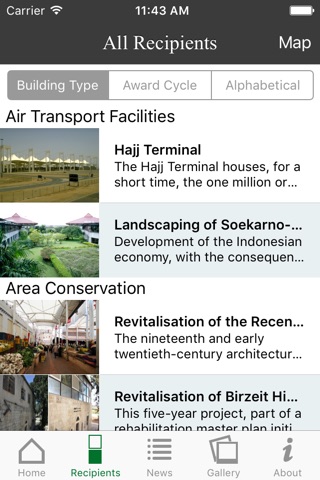
Aga Khan Award for Architecture app for iPhone and iPad
The official Aga Khan Award for Architecture application contains detailed documentation, including photos, videos, drawings and descriptions, of the 100+ projects that have received the Award to date.
The Aga Khan Award for Architecture’s mandate is different from that of many other architecture prizes: it selects projects – from slum upgrading to high rise “green” buildings – that not only exhibit architectural excellence but also improve the overall quality of life. Over the last four decades, it has steadfastly championed the needs and aspirations of human beings within the practice of architecture.
The Award is also different because it not only rewards architects, but also identifies municipalities, builders, clients, master craftsmen and engineers who have played important roles in the realization of a project.
Established in 1977, the Aga Khan Award for Architecture is given every three years to projects that set new standards of excellence in architecture, planning practices, historic preservation and landscape architecture. The Award seeks projects that represent the broadest possible range of architectural interventions, with particular attention given to building schemes that use local resources and appropriate technology in innovative ways, and those that are likely to inspire similar efforts elsewhere. Projects can be anywhere in the world, but must successfully address the needs and aspirations of societies in which Muslims have a significant presence.
The Aga Khan Award for Architecture has a prize fund of US$ 1 million. The rigor of its nomination and selection process has made it, in the eyes of many observers, one of the world’s most important architectural prizes. Projects that have received the Aga Khan Award for Architecture include the Petronas Towers in Kuala Lumpur, Institut du Monde Arabe in Paris, the Central Market of Koudougou, Burkina Faso, and the rehabilitation of the Walled City of Nicosia in Cyprus.


